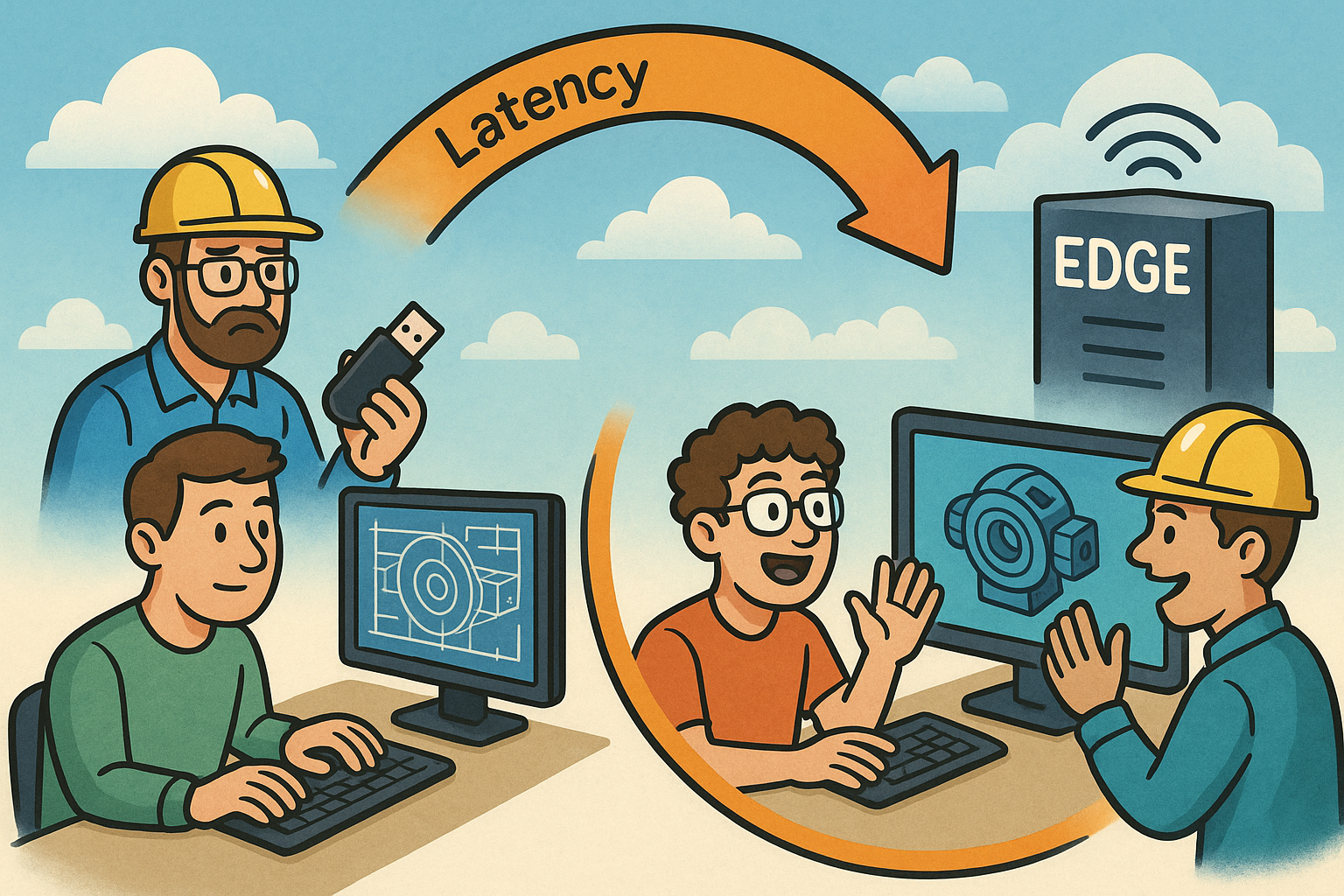Your Cart is Empty
Customer Testimonials
-
"Great customer service. The folks at Novedge were super helpful in navigating a somewhat complicated order including software upgrades and serial numbers in various stages of inactivity. They were friendly and helpful throughout the process.."
Ruben Ruckmark
"Quick & very helpful. We have been using Novedge for years and are very happy with their quick service when we need to make a purchase and excellent support resolving any issues."
Will Woodson
"Scott is the best. He reminds me about subscriptions dates, guides me in the correct direction for updates. He always responds promptly to me. He is literally the reason I continue to work with Novedge and will do so in the future."
Edward Mchugh
"Calvin Lok is “the man”. After my purchase of Sketchup 2021, he called me and provided step-by-step instructions to ease me through difficulties I was having with the setup of my new software."
Mike Borzage
Harnessing Cloud-Based AI for Revolutionary Design Optimization
September 01, 2024 3 min read


Introduction to Cloud-Based AI in Design
The field of design has seen remarkable transformations over the decades, particularly with the advent of Artificial Intelligence (AI) in design software. Initially, AI was primarily used for basic automation and optimization. However, its role has expanded significantly, becoming an integral part of modern design processes. AI enables designers to create more complex, efficient, and innovative products by automating repetitive tasks and providing deeper insights through data analysis.
Cloud computing has further revolutionized the design industry by offering scalable, flexible, and powerful computing resources. The combination of AI and cloud computing has created a synergy that enhances the capabilities of design software, making it possible to handle more complex computations and fostering a more collaborative and efficient workflow.
Key Benefits of Cloud-Based AI for Design Optimization
Scalability and Flexibility
One of the most significant advantages of cloud-based AI is its ability to scale. Cloud infrastructure can support large-scale AI computations, which are often required for complex design tasks. This scalability ensures that designers can access the necessary computing power without investing in expensive, high-performance hardware.
- Flexibility in resource allocation: Cloud platforms allow for dynamic allocation of resources based on the project's needs, ensuring cost-effective use of computational power.
- Cost management: Pay-as-you-go models enable design teams to manage their budgets more efficiently, paying only for the resources they use.
Enhanced Collaboration
Cloud-based AI facilitates real-time data sharing and collaboration among design teams, regardless of their geographical locations. This improved communication and workflow integration are crucial in today's globalized work environment, allowing for:
- Seamless sharing of design data and feedback in real-time.
- Enhanced collaborative tools that integrate with existing design software.
Performance and Speed
The processing power of cloud-based AI accelerates the completion of complex design tasks. By leveraging distributed computing resources, design processes that would have taken days or weeks can be completed in a matter of hours or even minutes.
Practical Applications of Cloud-Based AI in Design
Generative Design
Generative design is a cutting-edge approach that uses AI algorithms to generate multiple design alternatives based on specific constraints and parameters. By implementing generative design on cloud platforms, designers can explore a vast array of potential solutions quickly and efficiently. This method has led to the creation of innovative products that push the boundaries of traditional design.
Predictive Analytics and Simulation
AI-driven predictive analytics and simulation tools enable designers to foresee design outcomes and optimize parameters before physical prototypes are built. By analyzing historical data and predicting future performance, these tools help in making informed design decisions. This capability is particularly valuable in fields like automotive and aerospace engineering, where precision and reliability are paramount.
Automated Design Optimization
Cloud-based AI tools can automate many tedious and repetitive design tasks, freeing designers to focus on more creative and strategic aspects of product development. From concept generation to production planning, AI-driven tools streamline the design process, resulting in faster and more efficient product development cycles.
Future Prospects and Challenges
Emerging Trends
The future of cloud-based AI in design looks promising, with several emerging trends on the horizon. Potential advancements include deeper integration with Internet of Things (IoT) devices, enabling real-time data collection and analysis, and the use of edge computing to reduce latency and improve performance.
Challenges and Considerations
Despite its advantages, the adoption of cloud-based AI in design comes with challenges. Data security and privacy are major concerns, as sensitive design data must be protected from unauthorized access. Additionally, ethical considerations and biases in AI algorithms need to be addressed to ensure fair and unbiased design outcomes.
Conclusion
Cloud-based AI has the potential to transform the design industry by providing powerful tools for optimization, collaboration, and innovation. As these technologies continue to evolve, it is crucial for design professionals to embrace and adapt to these changes to stay competitive and drive progress in their respective fields.
Also in Design News

Rhino 3D Tip: Build reusable, data‑driven title block templates in Rhino
December 11, 2025 2 min read
Read More
Live Performance Budgets: Real-Time Cost, Carbon, Energy and Lead-Time in CAD/BIM
December 11, 2025 14 min read
Read MoreSubscribe
Sign up to get the latest on sales, new releases and more …



